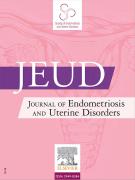Tissue removal system versus bipolar resection for hysteroscopic polypectomy: Long-term results - 05/04/25
 , Margot Van Geyte a, Alejandra De Frenne a, Steven Weyers a, b, Huib van Vliet a, c, Steffi van Wessel b, Tjalina Hamerlynck a, b
, Margot Van Geyte a, Alejandra De Frenne a, Steven Weyers a, b, Huib van Vliet a, c, Steffi van Wessel b, Tjalina Hamerlynck a, bHighlights |
• | Mechanical tissue removal systems and bipolar resection are both effective for endometrial polyp removal. |
• | Abnormal uterine bleeding and polyp recurrence rates show no significant difference between the two methods. |
• | Further research is needed on cost-effectiveness and long-term outcomes of both procedures. |
• | Hormonal status and comorbidities may predict recurrence and symptom persistence after hysteroscopic polypectomy. |
Abstract |
Objective |
This study aims to compare long-term outcomes, including recurrence of abnormal uterine bleeding and polyp recurrence, following hysteroscopic polypectomy using either a mechanical tissue removal system or bipolar resection.
Material and methods |
This is a multicentre follow-up study of a randomised controlled trial comparing a tissue removal system with bipolar resection for hysteroscopic polypectomy. The study was conducted at Ghent University Hospital (Belgium) and Catharina Hospital Eindhoven (The Netherlands). The trial was approved by the ethical committees of both centres and registered at Clinicaltrials.gov (NCT05337046, April 2022). Thirty-eight patients (49.4%) were willing to participate in this follow-up study, with 19 patients in each group. The primary endpoint was abnormal uterine bleeding recurrence after the procedure. Secondary endpoints included polyp recurrence, symptom relief, patient-reported satisfaction, and need for additional treatments.
Results |
Mean follow-up time was over nine years in both groups. The recurrence rate of abnormal uterine bleeding was 25% in the tissue removal system group and 40% in the bipolar resection group (p = .65), with a mean time to recurrence of 8.6 years (95% CI, 6.5–10.7 years) in the tissue removal system group and 8.1 years (95% CI, 5.8–10.5 years) in the bipolar resection group (p = .57). Furthermore, there was no significant difference in time to polyp recurrence (p = .93) or symptom relief between the two groups (p = .62).
Conclusion |
This long-term follow-up study found no significant difference in the recurrence of abnormal uterine bleeding between a tissue removal system and bipolar resection for hysteroscopic polypectomy.
Le texte complet de cet article est disponible en PDF.Abbreviations : AUB, TRS, RCT, CI
Keywords : Abnormal uterine bleeding, Endometrial polyps, Tissue removal system, Bipolar resection, Long-term results
Plan
Vol 10
Article 100114- juin 2025 Retour au numéroBienvenue sur EM-consulte, la référence des professionnels de santé.

